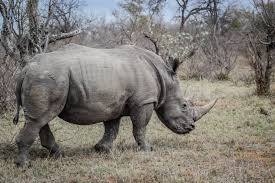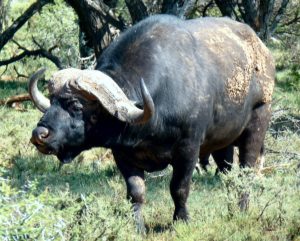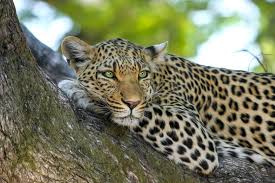LION ELEPHANT RHINO
The Mecca for all wildlife enthusiasts, travelling between June and September, must surely be the countries of Southern Africa where lion, elephant, rhino, leopard and African buffalo, known as the ‘big five’, reside in abundance along with herds of other creatures, birds and insects. Numerous reserves are to be found in this part of the world but standing above all others must surely be the Kruger National Park, Etosha, Chobe, the Masai Mara and the Serengeti.
South Africa
Namibia
Etosha National Park. (Namibia) Travel across the border of South Africa into Namibia and you will enter a land of desert sands, semi- desert and savannahs, however, the abundance of wildlife at Etosha is only possible because of the grasslands, saltpan, camel thorn and Mopani trees to be found in the North of the country. A diverse mix of animals can be found at Etosha including elephant, rare black rhino, leopard, lion and giraffe. Many species of birds can be found here including ostrich and Kori Bustard. The park is malaria free and well equipped to deal with ordinary cars. Accommodation is available within the park and is often accessible to the watering holes where the wildlife gather to drink. Deeper into the park are more luxurious camps offering a range of safari experiences. Should you be interested in the changing seasons of Namibia one of the best times to visit is after the rains when the desert is transformed into an oasis of colour and vegetation.
Botswana
Chobe National Park. (Botswana) Leaving South Africa behind and travelling further northwards will take you to Chobe Game Reserve in Botswana, a place not to be missed. Admire the beautiful Chobe River and observe the plentiful varieties of wildlife to be found there, particularly the huge herds of elephant and buffalo. Chobe was once inhabited by the San (Bushmen) people but is now a National Park and protected game reserve. Here you will experience sightings of creatures such as lions, hyena, zebra, kudu, giraffe, impala, wildebeeste and many more. Make sure to have your binoculars at the ready as Chobe is also famous for its bird population of over 450 different species such as kingfisher and fish eagles, storks, herons and geese. Take a spectacular sundowner cruise to view the river’s inhabitants – crocodile and hippo – as the sun sets on the far horizon. You can self drive within the park but there are lodges available that provide game drives to help you better understand the eco system residing within the park. If time permits it is possible to take a short drive into Zimbabwe to visit the amazing Victoria Falls.
Kenya
The Masai Mara. (Kenya) Kenya is another popular tourist destination for wildlife enthusiasts. Located in the grasslands of the Great Rift Valley, the Masai Mara is a haven for one of the world’s most spectacular eco systems and is particularly famous for its wildebeeste migration during the months of July and November. Up to 1.5 million animals can take part in this migration. Because of the abundance of creatures it is almost certain that visitors will catch sight of the ‘Big Five’ as well as cheetah, hyena, hippo, crocodile, baboons, warthog, gazelles, impala, and zebra but to name a few. One can drive to the Park but there are also two airstrips for those preferring to fly in. There are only two lodges inside the park but a variety of camps on its peripheral. A visit here provides one with the opportunity to participate in game drives both during the day and at night, to visit a Masai cultural village and take a balloon flight offering spectacular views of the land below. The Masai Mara is also a popular wedding venue destination.
Tanzania
The Serengeti (Tanzania). The great migration of wildebeeste sees them exit the Masai Mara and enter the world famous Serengeti National Park. The Serengeti stretches from Kenya in the North to Lake Victoria on the West. The park has the highest concentration of large mammals on our planet and is well known for its lion population and diverse species of birds. The discerning photographer is sure to capture images of cheetah, leopard spotted hyena, golden jackal, elephant and a variety of Bok. Taking into account the state of the roads, it is advisable to make stops during the 200 mile journey from Arusha. There are a variety of places to stay within the park and it is recommended that you spend at least three to four days there. Also take a couple of days to visit the Ngorongoro Crater. A trip to the golden plains of the Serengeti will leave you with many happy memories of time spent observing nature in the raw.
Which ever park you choose you will never forget the truly amazing opportunity you had to spend time with some of the world’s most precious wildlife.










I couldn’t believe how many elephants live in the Chobe Game Reserve. It must be a hard job to stop poachers in such a vast area of land. A sundowner cruise on the river is a must to see this beautiful land as the sun sets on the horizon.
We took a fabulous early morning balloon flight over the Masai Mara and it is something we will never forget. We really felt at one with the natural world as we floated above the trees and watched the herds of animals running below.
Visitors to the game reserves must remember that they are in the land belonging to the animals and should be aware of the rules of the game reserve. Never take anything for granted and stay in your car at all times.